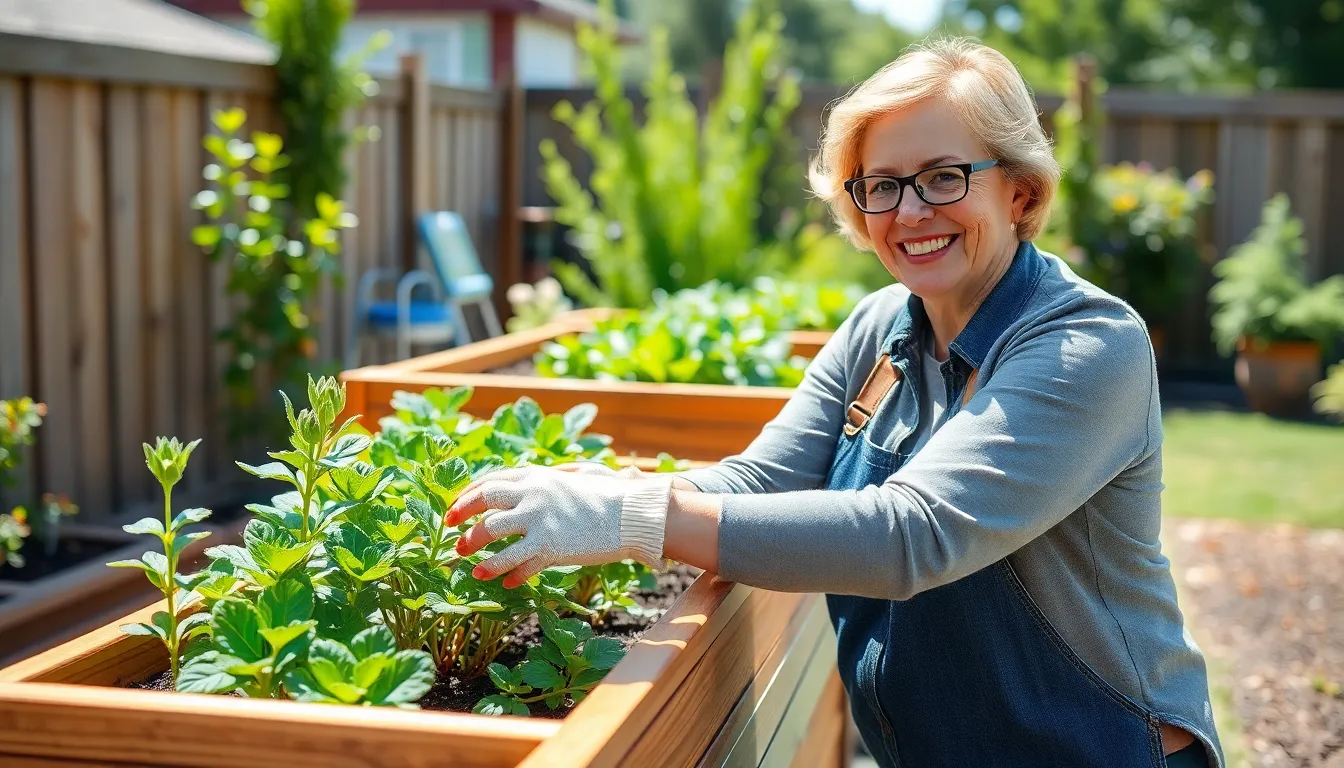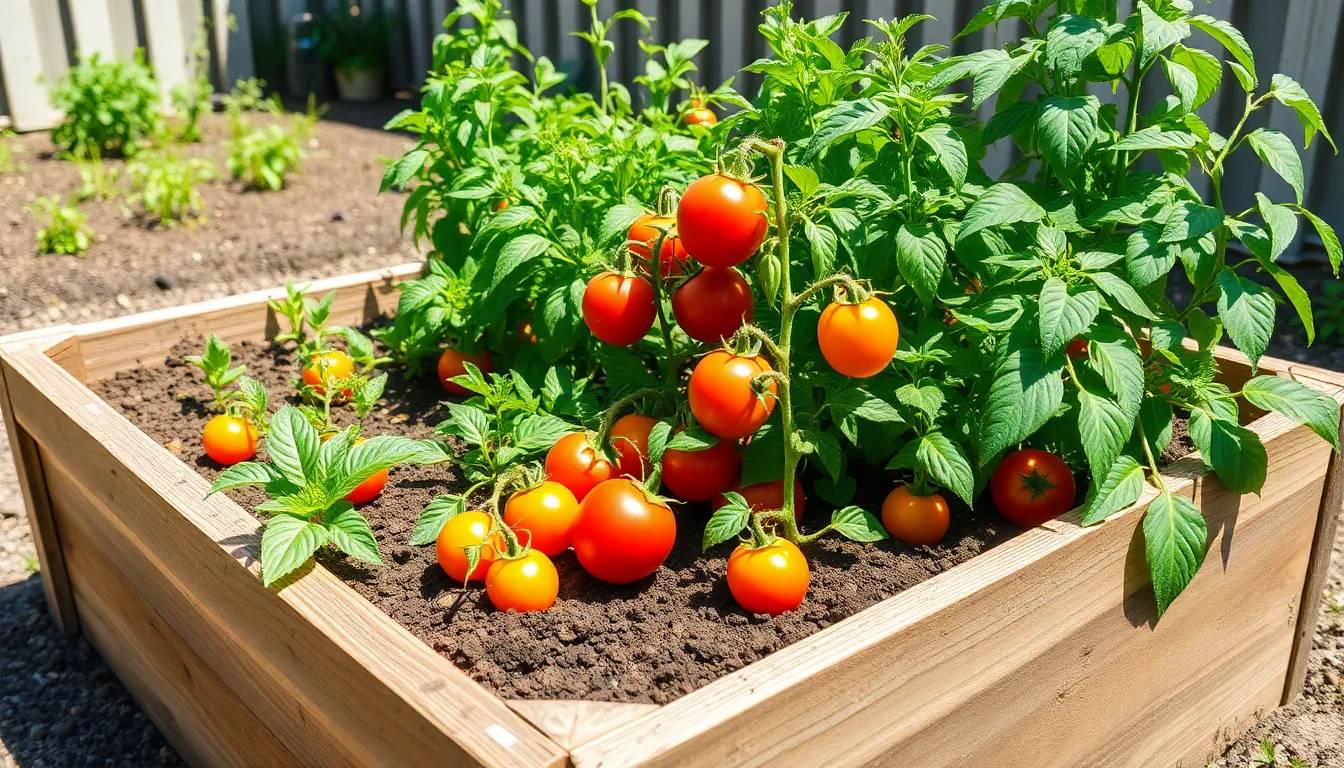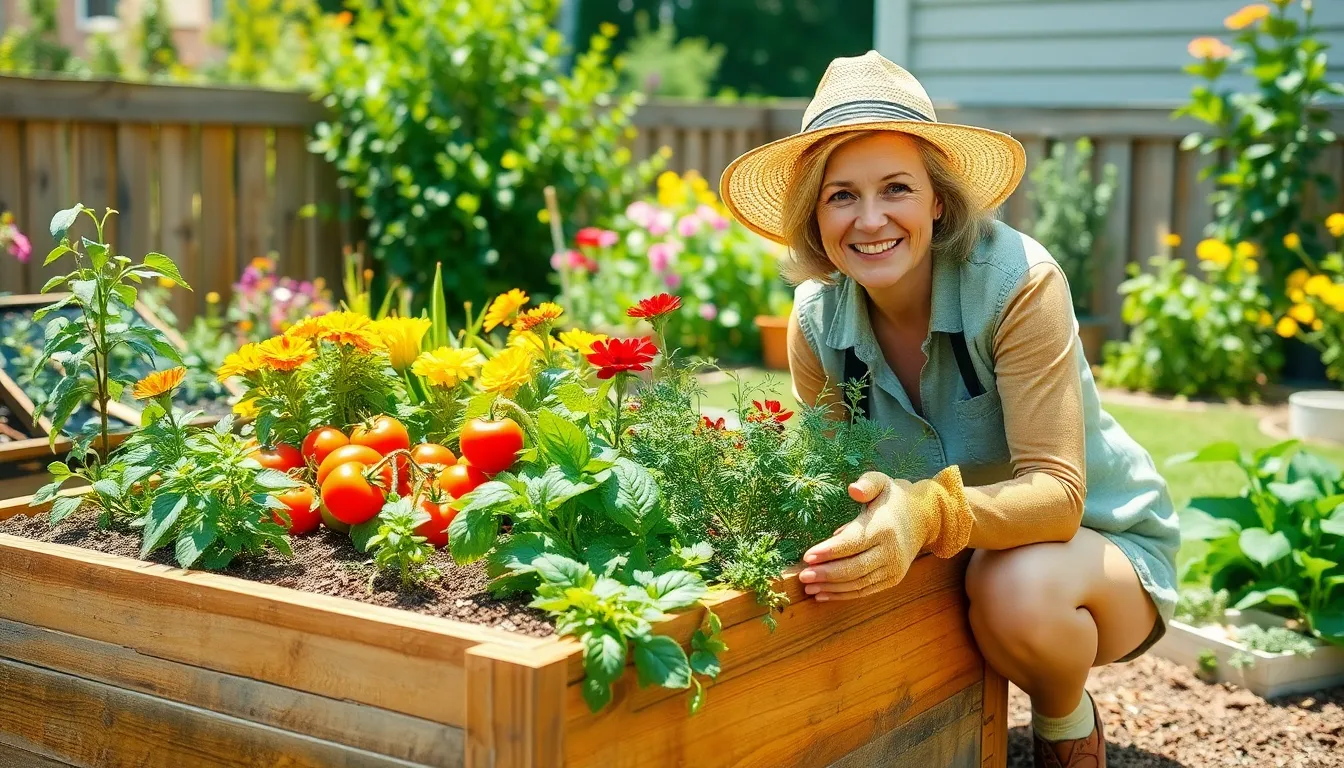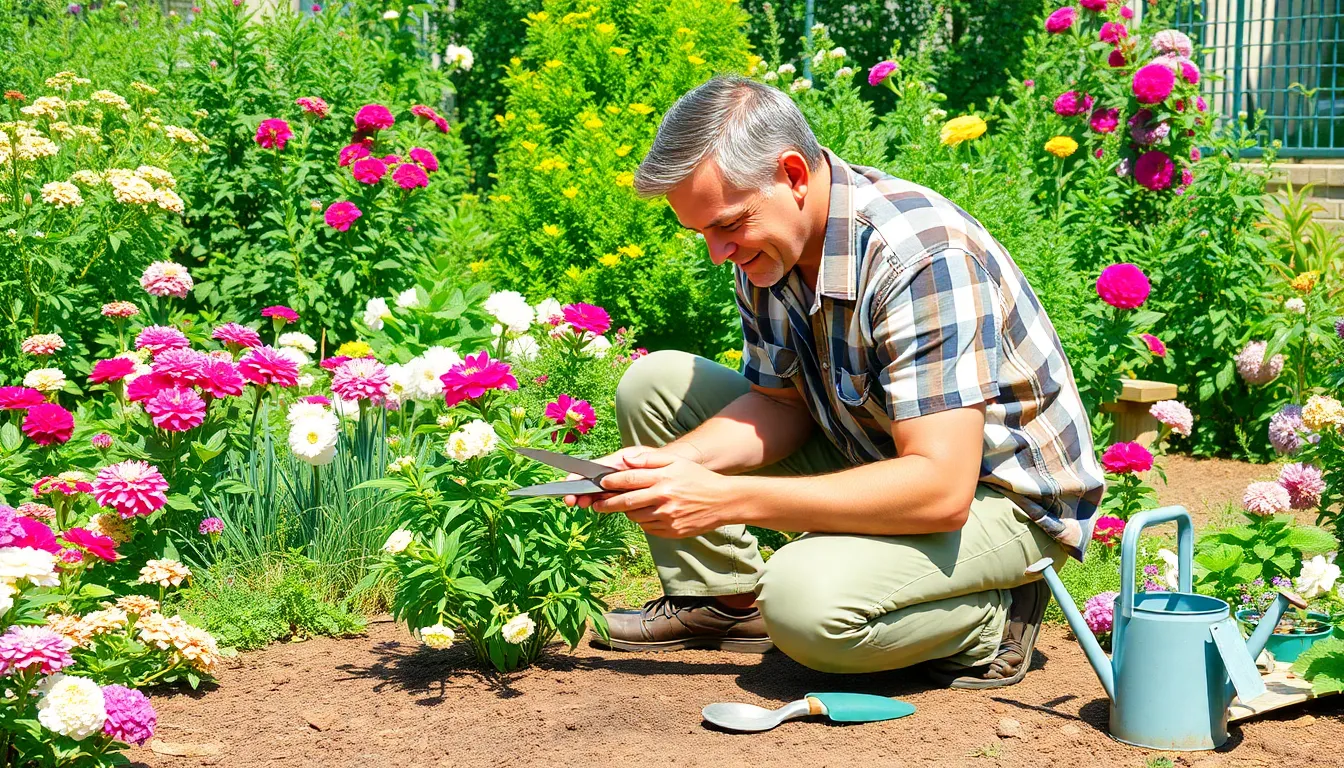Imagine stepping into your backyard and being greeted by a vibrant oasis of fresh vegetables and blooming flowers, all thanks to raised garden beds. These elevated plots aren’t just a pretty sight; they’re the secret weapon for any aspiring gardener looking to level up their green thumb. Whether you’re a seasoned pro or a beginner still figuring out which end of the trowel to hold, raised beds offer the perfect blend of style and functionality.
Table of Contents
ToggleOverview of Raised Garden Beds
Raised garden beds consist of soil contained in a defined space above ground level. This design increases drainage, reduces soil compaction, and allows for improved root growth. They also offer flexibility in terms of size and shape, accommodating various gardening needs.
Many gardeners prefer raised beds for their ease of access, especially for individuals with mobility challenges. The elevated structure minimizes bending and kneeling, making gardening more comfortable. In addition, raised beds warm up faster in spring, extending the growing season.
Soil quality impacts plant health significantly. Raised beds let gardeners control the soil composition, ensuring an optimal growing environment. They can mix organic matter, compost, and nutrients, fostering healthier plants.
Pests and weeds also present challenges in traditional gardens. Constructing raised beds permits easier management of these issues. By using barriers like hardware cloth or mesh at the bottom, gardeners can deter burrowing pests effectively. Moreover, the height of raised beds discourages weeds from spreading easily.
Planting in these beds allows for more intensive gardening. Gardeners can grow more plants in a smaller area, maximizing space. Additionally, various crops can be interplanted, promoting biodiversity and improving yields.
Durability matters for long-term use. Many raised beds are built from rot-resistant materials such as cedar or composite wood. Choosing quality materials ensures that the beds last for years, providing a sustainable gardening solution.
Understanding the benefits of raised garden beds can motivate gardeners to adopt this practice, enhancing their overall gardening experience.
Benefits of Raised Garden Beds


Raised garden beds offer numerous advantages for gardeners of all experience levels. These benefits enhance plant growth, simplify gardening tasks, and improve accessibility.
Improved Soil Drainage
Enhanced soil drainage is one key benefit of raised garden beds. They allow excess water to escape more freely than traditional garden plots, preventing waterlogged soil. This increased drainage promotes healthier root systems, as roots thrive in well-aerated soil. With elevated beds, excess moisture won’t hinder plant growth. Gardeners notice that specific plants, such as tomatoes and peppers, flourish in these conditions, showcasing the direct relationship between improved drainage and plant health.
Accessibility and Ergonomics
Accessibility stands out as another significant advantage. Raised garden beds simplify gardening tasks for individuals with mobility challenges. The elevated design reduces the need for bending and kneeling, making planting and maintenance more comfortable. Many gardeners find that they can spend more time caring for their plants without discomfort. Additionally, raised beds can be designed at varying heights to suit individual needs, further enhancing ergonomics. This improved accessibility encourages more people to participate in gardening, fostering a thriving community of plant enthusiasts.
Types of Raised Garden Beds
Several types of raised garden beds cater to various gardening needs. These options range from materials to design, providing flexibility and personalization for gardeners.
Materials Used
Common materials for raised garden beds include wood, metal, stone, and composite materials. Cedar and redwood resist rot, making them popular choices for their durability. Galvanized steel offers a modern aesthetic and stands up to weather conditions. Concrete blocks provide sturdy, long-lasting options for those seeking a robust structure. Composite materials combine wood fibers and plastic, delivering longevity with an appealing appearance. Each material influences both the visual appeal and the lifespan of the garden bed.
Design Options
Design options for raised garden beds vary widely. Traditional rectangular shapes remain popular for their straightforward construction. Some gardeners opt for circular or L-shaped designs to enhance space efficiency. Height adjustments cater to personal preferences, especially for those with mobility challenges. Multi-tiered beds maximize vertical space, allowing for diverse planting strategies. Many gardeners incorporate decorative elements like trellises or lattice to support climbing plants while enhancing aesthetics. Each design allows for personalization, aligning with individual gardening styles.
Considerations for Building Raised Garden Beds
When planning raised garden beds, several key factors play a vital role in their success. Assessing location and size helps ensure optimal growing conditions and functionality.
Location and Size
Selecting a proper location is crucial for raised garden beds. Full sun exposure for at least six hours each day supports healthy plant growth. Drainage patterns also matter; placing beds where water tends to pool can lead to waterlogged soil. Evaluating proximity to a water source simplifies irrigation tasks. As for size, beds vary in dimensions. A common width is four feet, allowing easy access from both sides. Length can range from four to eight feet, accommodating various gardening needs. Raising beds to a height of 12 to 36 inches can ease maintenance while allowing for diverse planting arrangements.
Soil Selection
Choosing the right soil is critical for thriving plants. A mixture of topsoil, compost, and well-rotted manure creates a nutrient-rich environment. Soil depth in raised beds typically ranges from 12 to 18 inches, promoting strong root development. Avoiding compacted soil ensures good drainage and aeration. Integrating organic matter regularly boosts fertility. Testing soil pH before planting helps determine necessary amendments, tailoring the mix to suit specific plants. Additionally, using weed-free compost minimizes the likelihood of future pest issues.
Maintenance Tips for Raised Garden Beds
Regular upkeep enhances the longevity and productivity of raised garden beds. Monitor soil moisture consistently to prevent overwatering or drought. Appropriate watering methods include drip irrigation systems and soaker hoses, which deliver water directly to plant roots.
Mulching serves a dual purpose: it helps retain soil moisture and suppresses weed growth. Organic mulch options include straw, wood chips, or shredded leaves. Ensuring a layer of mulch about 2 to 4 inches thick provides essential benefits.
Fertilizing effectively optimizes soil nutrients for plant health. Applying organic fertilizers, such as compost or well-rotted manure, significantly boosts soil fertility. Scheduling fertilization every few weeks during the growing season ensures plants receive adequate nutrients.
Pest management plays a crucial role in maintaining raised beds. Using row covers or insect netting protects plants from common pests while allowing sunlight and rain to penetrate. Regularly inspecting plants for signs of pests early prevents infestations.
Incorporating crop rotation improves soil health and reduces disease risk. Alternating plant families in each season helps maintain nutrient levels and disrupts pest cycles. Keeping records of crops planted in each bed assists in effective planning.
Cleaning tools and equipment regularly prevents the spread of diseases among plants. Disinfecting gardening tools, especially between uses, protects plants from harmful pathogens. A simple solution of bleach and water effectively sanitizes tools.
Lastly, seasonal inspection of raised beds ensures structural integrity. Checking for signs of rot, wear, or instability allows for timely repairs. Addressing any issues proactively maintains a healthy and productive garden.



